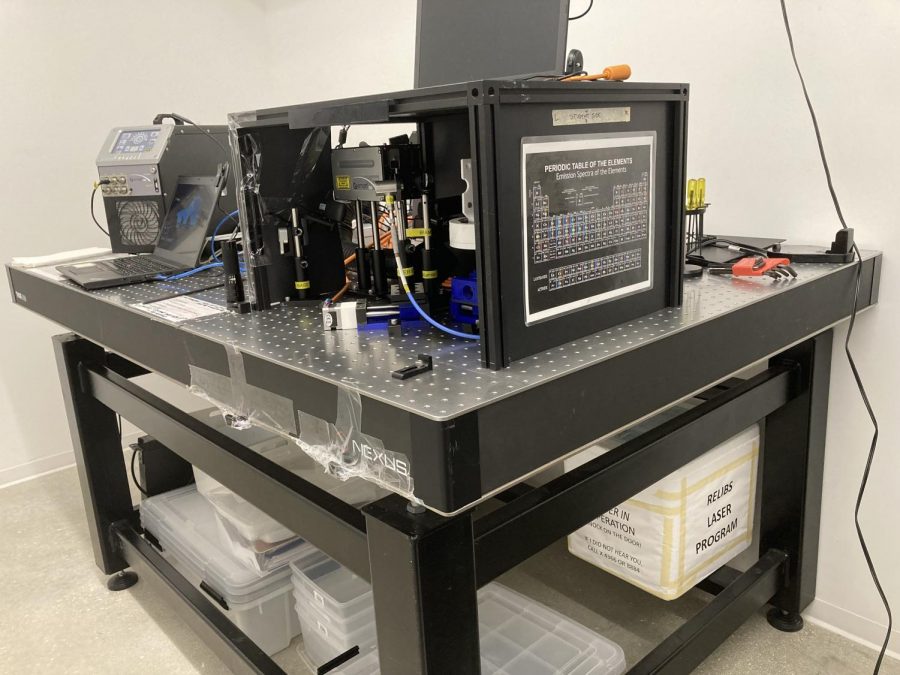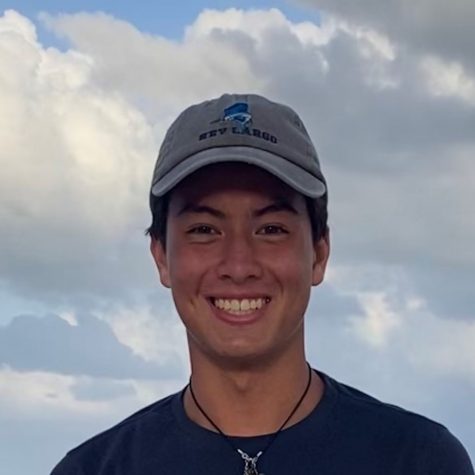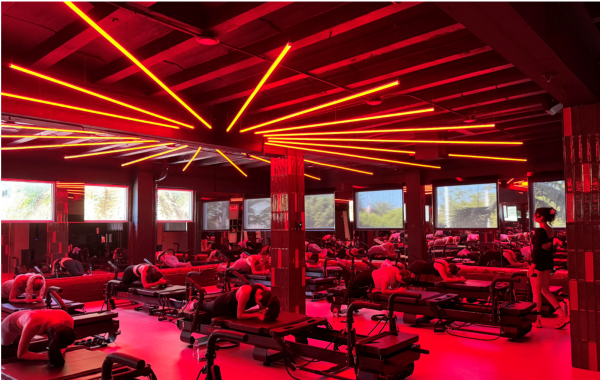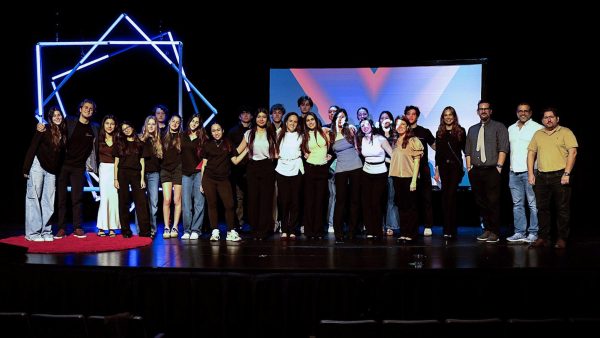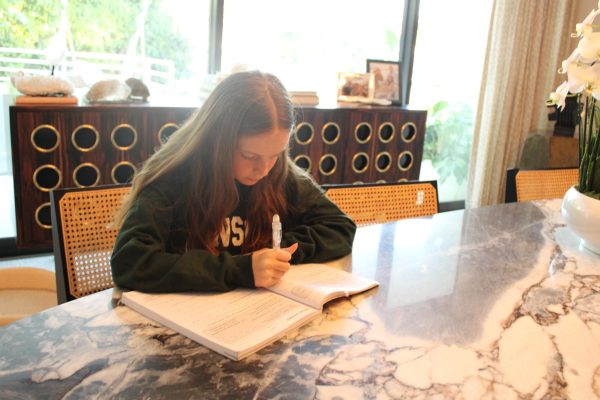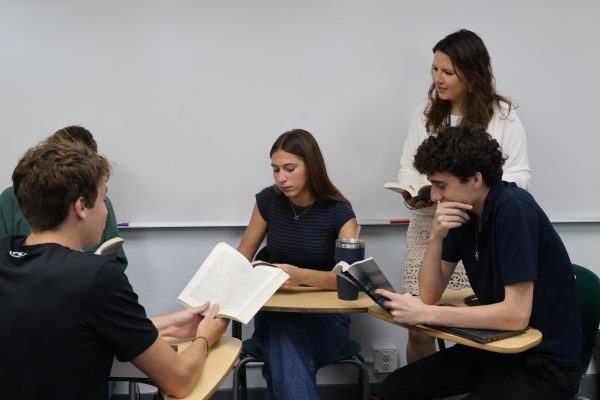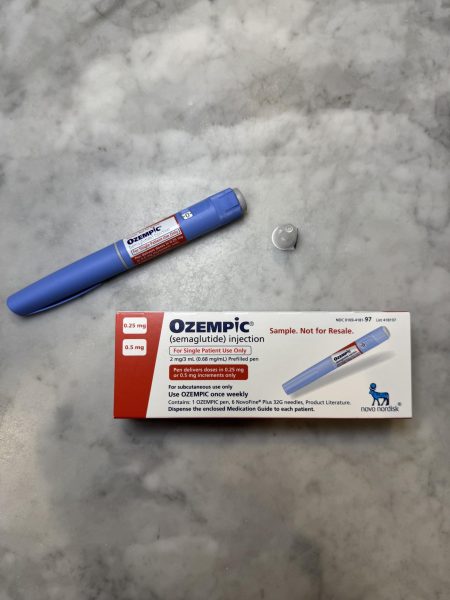Inside the groundbreaking Young REsearchers Program
YREP’s spectroscopy laser, housed in the STEM building.
The gleaming Ransom Everglades STEM Center stands tall around the surrounding buildings on campus. Within its glass walls sit four floors of rooms teeming with students, teachers, and technologies dedicated to fostering the future of STEM at Ransom Everglades. Among these rooms is STEM 218, the home to YREP.
YREP stands for Young REsearchers Program. The program emerged four years ago when Dr. Claudia Ochatt recruited Clara Villalba ’22 and Isa Ciocca ’20 to make the best use of her new spectroscopy laser.
Max Vallone ’22, who has worked extensively both on and with the spectroscopy laser, explained how it functions. According to Vallone, YREP uses this laser to perform LIBS (Laser Induced Breakdown Spectroscopy) which helps derive the chemical composition of various substances. LIBS involves vaporizing a miniature part of a sample, turning it into plasma that emits a specific wavelength of light. Each element has its own specific wavelength that it emits when vaporized, allowing researchers to identify the element.
So how does YREP use this technique at Ransom? Although the program is still in its inception, multiple members of YREP have taken on widely different projects with the laser. Villalba described the laser’s versatility as “really application-based, so whatever we’re doing with the laser can be applied to basically any field of science.” At the moment, YREP has completed multiple projects, with many more on the way.
Villalba and Victoria Porto ’22 ran the first project, which involved lasing various energy drinks to find out what they contain. They discovered titanium, cadmium, mercury, magnesium, and zinc in every single energy drink, compared the amounts of each metal to information provided by the World Health Organization, and found that all the drinks have each of these metals in high enough concentrations to be toxic. After collecting all their findings, Villalba and Porto published a peer-reviewed paper that they then submitted to the Junior National Symposium competition. The competition subsequently selected them to present their paper at the competition.
Not only do students use the laser, they improve it. Vallone, for example, leads projects that involve upgrading the laser. The summer before his sophomore year, Dr. Ochatt recruited him, an avid participant in robotics, to help her improve the laser.
Vallone said that he initially sketches designs for what he wants to build and then moves the designs over to CAD. Next, he 3D-prints the pieces and constructs them. Finally, with a combination of coding and data science, he programs a system that uses his inventions.
So far, Vallone has created sample holders for mounting liquid samples. Now he is working on a system that allows the machine to position the samples automatically, as well as a way for the machine to quantify the concentration of the samples. Along with other members of YREP, Max traveled to Rhode Island to present his work.
Even though YREP involves individual students taking on projects and analyzing data, they also brainstorm solutions to problems as a group. For instance, when lasing certain liquids, students had problems with substances spilling. Normally this would not raise any alarm, but it meant that students could not lase any toxic liquids. To fix this problem, YREP invented an “agro-inducing method,” according to Villalba. She described it as a process that jellifies the liquid with a chemical called agros so that it will not spill. Additionally, YREP is currently trying to create better ventilation systems to lase gases more efficiently.
Another group project is also underway that involves anyone in the club who is interested. The goal is to figure out the wavelength of each individual element so that the club can refer to it later. To do this, they lase elements in various mediums, such as with the agro-inducing method, and analyze what the machine records. Francisco Gomez Rivas-Vazquez ‘24 said, “There’s about six of us, who each had our own metals. Some had manganese or cobalt; I had copper.”
Today, YREP falls under SNHS, which is the Science National Honors Society, an organization dedicated to recognizing students who dedicate themselves to science as well as promoting scientific endeavors among students. Members of both SNHS and YREP predict a bright future on the way. Vallone sees the program expanding into the community outside of RE, especially with a current project that works with the Water Keepers Association to find heavy metals in bay water.
“As the program continues to grow, I think we’ll start to see Ransom become much more of a research institution,” Vallone said.


